Go Goole
Industrial Handbook 1973
Foreward - "Go Goole"
Goole 1973
The Port of Goole
British Waterways
Communications
Go Goole by Motorway
An Historical Note
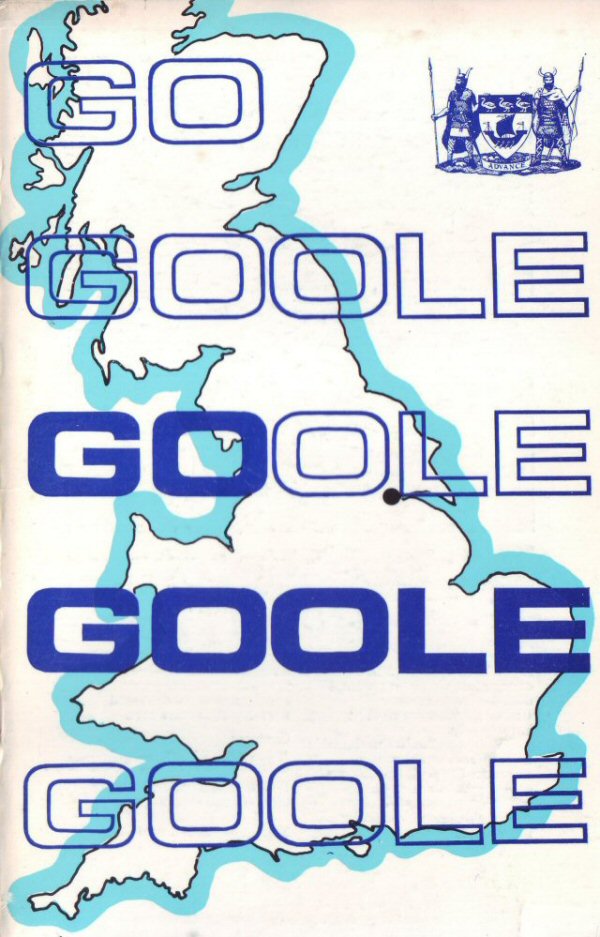
Foreword - "Go Goole"
Why have we used this title for our booklet? What has Goole to offer which the Coastal Ports have not? What are the facilities in Goole for warehousing and transport? Are roads, rail and waterways in and around the Port adequate for rapid transit of goods?
The answers to these and other questions are contained in this booklet, which, when you have studied it, we are sure will confirm our faith in our town and port and, we hope, will attract your business.
Fifty miles from the coast at the start of the motorway network covering the whole of England. Extensive land now available for development. Shipbuilding, engineering, warehousing, forwarding agents and shipowners. Consumer Industries, Tailoring, and other ancillary industries.
These are the facilities and services which Goole has to offer and why we have named our booklet "GO GOOLE", since we believe that every requirement can be met and that if you do "GO GOOLE" then you will have taken a step which you will never regret.
If any further information is required for any of the services or facilities which the Town and port has to offer, Goole and District Junior Chamber will be pleased to give as much advice as possible.
Finally, we should like to thank our advertisers, without whose help this booklet could not have been produced.
Goole 1973
Population - 18,540
Area of Borough - 1,274 acres
The most inland port in Great Britain, Goole brings the North Sea to the very doorstep of Northern industry and to a point only yards from the brand new M62 motorway. It thus has vast potential to offer the businessman-but it also has a great deal to offer in other directions and is far removed from the days when it was referred to as "sleepy hollow".
The many sports enthusiasts throughout the town and adjacent area are far from being "sleepy". They have formed a lively Sports Council and are at present in the process of building a fine Sports Centre which will provide facilities for a wide range of activities including athletics, boxing, judo and karate. Also to be equipped with a sauna bath, the centre is being erected in the Victoria Pleasure Grounds which is the home ground of Goole Town Football Club, a stalwart of the Northern Premier League.
Goole already has a quite attractive and modernised indoor swimming pool as well as a whole host of organisations who provide a multitude of interests. These include football, fishing, tennis, bowls, cricket, rugby, chess, horse riding, sailing, swimming, water-skiing and amateur dramatics and operatics. A fast growing Marina provides a base for the many pleasure craft using both the river and canal network, of which waterways Goole is a very good centre.
Goole offers a wide range of housing facilities ranging from the older types of house in the town's central area to several attractive modern estates built within the last four years. Prices of these houses are still well below the national average. The Borough Council makes advances for house purchase and provides grants for improvements to older properties.
Boothferry Road is the main shopping thoroughfare. It is broad and tree lined with wide pavements and most of the well-known stores are represented as well as long established private shops specialising in personal service. There is certainly no need to travel to larger towns for ordinary family shopping or for services that are part and parcel of our modern way of life. Among Goole's most popular shopping centres is the Market Hall in the Town Centre. It accommodates 74 stalls inside and 30 outside and is thronged on market days-Wednesdays, Fridays and Saturdays.
Visitors to Goole will find accommodation of varying degrees from private hotels to brewery owned licensed hotels that offer good two star facilities for travellers. There are also a fair number of "'pubs and clubs" throughout the town with warm and friendly surroundings and with, in several cases, live entertainment and dancing.
Societies represented in Goole include Freemason; Rotarians; the Round Table; Chamber of Trade; Chamber of Commerce; Business and Professional Women's Club; the Royal British Legion; Working Men's Club; Railway Club and Institute and R.A.F. Association Club-as well as many other social clubs, youth organisations, political and nationally based clubs.
Goole's Places of Worship are:
St. John's Parish Church and St. Mary's (both C. of E.); St. Joseph's and St. Thomas's Roman Catholic Churches; Four Methodist churches; one Congregational; Salvation Army Chapel; Mission Church and Jehovah Witnesses.
Early closing day is Thursday but a small number of shops close on Monday.
Educational needs are catered for by the town's five county primary schools; Roman Catholic primary schools; Secondary High School and Grammar School. At the County Secondary High School and Grammar School is the Vermuyden Institute for Further Education.
The Public Library is in Carlisle Street and is open daily at varying times and local newspapers are the Goole Times which is published weekly and the Hull Daily Mail which is published every evening.
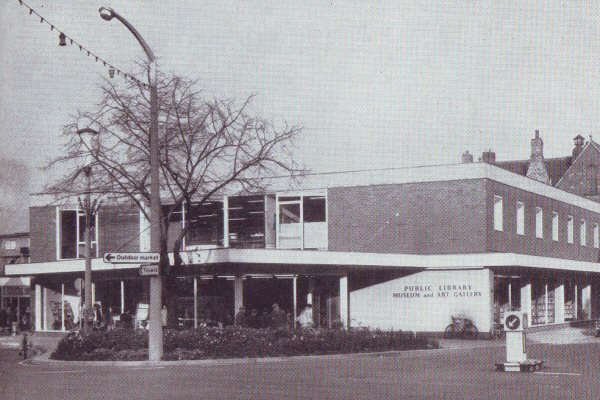
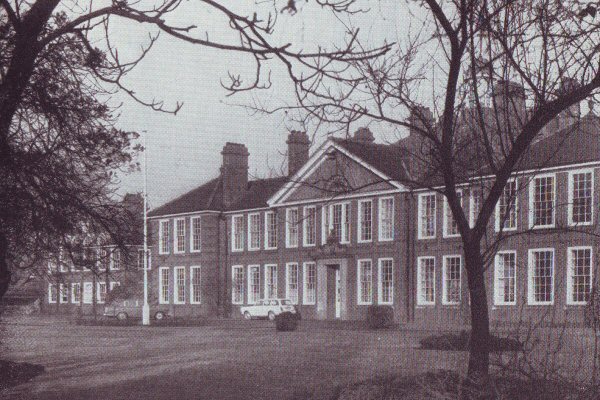
The Port of Goole
Goole, the most inland port in Great Britain is 50 miles from the sea and is geographically, in a unique position being close to the industrial West Riding and the Midlands. The port, owned by the British Transport Docks Board, is well known for its quick turn-round of vessels, a strike free labour force second to none in the country and its comparative cheapness to other ports. The excellent relations between Goole dockers and their employers have certainly been of considerable value in attracting new business and for these reasons several new liner services were introduced to Goole in 1971.
Three miles of quays surround the docks within the port and also provided are multi- storeyed warehouses including bonded storage and transit sheds. Craneage includes 7½ ton shorecranes, mobile cranes of up to 30 tons capacity and heavy lift cranes capable of lifting 50 tons. A Scotch Derrick was erected in 1970 at a cost of for container traffic.
There is direct communication to the canal system which gave birth to Goole as a port over 150 years ago. The canal enables overside discharge to inland waterways craft. In addition the port has road and rail access alongside the ships.
Goole, situated on the River Ouse, can accommodate vessels to a draft of 18 feet 6 inches on spring tides. The docks are maintained at a constant level providing a depth of 20 feet and there are three entrance locks, the largest being 360 feet long by 80 feet wide. There are also three dry docks for shipbuilding and repairs.
Entry into the European Economic Community in 1973 will be a great challenge to the companies operating the liner services, since, for more years than can be remembered, weekly services have operated from Goole to and through the near continental countries into the heart of Europe including Austria, Switzerland, Italy, Hungary and Czechoslovakia. There are weekly liner services trading to Norway, Sweden, Denmark, East and West Germany, Holland, Belgium, France and Spain and there is a monthly service to Portugal. In addition, there is further trade by charter vessels (for cargoes including timber, steel, sugar and ores) some short sea and others with the Baltic and Mediterranean countries and occasionally with the United States.
Coal shipments, which for many years have been the backbone of the port's tonnage, are now on the decline. However, recent additions have been made to the trade by increased shipments of Coalite, coke beans and coke breeze to Norway and record cargoes in excess of 3,200 tons have been shipped to the port of Mo-i-Rana.
Renault, the French car manufacturing firm, after surveying many of this country's ports, decided in 1971 to use Goole. They lease a quay compound in an area which was recently extensively modernised for the reception of their cars. These are then taken to another site on Goole's Industrial Estate before being distributed throughout the North of England and Scotland. Renault cars are shipped to Goole in the Ugland Line custom-built car carriers "Autoroute", "Autostrada" and others capable of bringing 500 averaged sized cars on one voyage. Now in 1973, in addition to Renaults, Volkswagen and Wartburg cars are imported in large numbers through Goole.
Many transport organisations operate in and near Goole covering distribution of all kinds throughout the country. The M62, which will cross the Yorkshire Ouse to within one mile of Goole Docks, and should be completed in 1975, must give heart to all users of the port. This means that Goole will have motorways through Yorkshire to Lancashire and via the M1 to the Midlands and the South to make Goole the best motorway connected port in the country.
British Waterways
British Waterways Board is established by statute to manage the canals and inland waterways of Great Britain. The Board's Freight Services Division is responsible for the profitable management of its docks, freight handling, and storage operations; it is also responsible for promoting freight movements of three hundred and forty miles of commercial waterways.
Goole is near an important junction of two of these waterways, the Aire and Calder Navigation and the Sheffield and South Yorkshire Navigation (New Junction Canal). The Aire and Calder has been the subject of a major modernisation programme; locks have been mechanised, new signalling installed and the banks protected against erosion. Over two million tons of freight are carried every year on this waterway, mainly by independent operators, B.W.B. carrying about 11 per cent in their own craft. Recently the Board proposed improvements for the Sheffield and South Yorkshire which would give a capacity for seven hundred and fifty ton barges as far as Mexborough and four hundred tons to Rotherham. The cost is estimated at £2.4 million and the benefits would be considerably increased traffic on the waterway, which would make a real contribution to easing road congestion.
A new type of craft has been designed for the Sheffield and South Yorkshire using the new push tow system, the tug pushes three one hundred and forty ton box like barges ahead, a system offering flexibility and more economic operation. The barges are capable of travelling to Europe on a revolutionary mothership: the BACAT system will enable barges loaded at inland centres to travel to the heart of the E.E.C. Composite craft are not new: for many years trains of compartments boats or "Tom Puddings" have carried coal to Goole for shipment to the South coast or abroad. Up to seven hundred tons can be carried in nineteen boats towed behind one tug; at the point of discharge a hoist picks up the barge and tips the coal directly into the ship's hold. A similar system, using much bigger barges is used to carry coal to the power station at Ferrybridge.
A wide variety of import and export cargoes are carried by vessels to and from the ports of the Humber Estuary, and tanker barges take five hundred ton loads of oil and petrol from the refineries around the estuary to inland distribution centres. Further new developments are envisaged to increase the capacity of the waterways and sites are available on the waterside for industrial developments utilising barge transport.
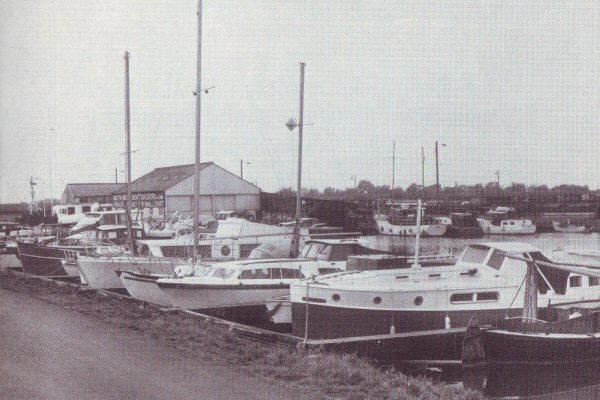
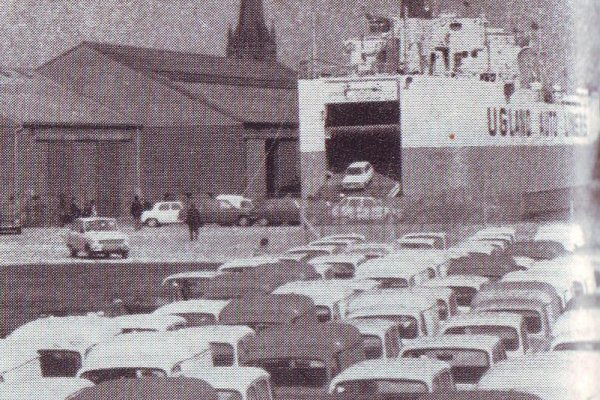
Communications
The next few pages will tell you about the transport available to Goole at the present time and those planned for the future - by water, road and rail.
Transport communications are vital to any industrial area or port and Goole is no exception. It is said that 'Goole is in a unique geographical situation'. This is because of the fact that the town is the most inland shipping port in the United Kingdom and is thus close to the Midland and Northern Industrial areas.
The town is in the south east of the West Riding of Yorkshire and is located in an area bounded by the River Ouse, the Dutch River and the Hull-Doncaster railway. Immediately outside this triangle are the communities of Hook, separated from the town by the railway, and Old Goole, separated from the town by the Dutch River.
Set between Goole and Old Goole are the docks (the town's major industry) and the Shipyard. Just outside the town is a light industrial estate which accommodates many industrial companies such as steel and concrete fabricators, tailors, builders and lager distributors.
Transport by Water
The River Ouse allows shipping access to the North Sea via the Humber Estuary. Freighters of 3,000 tons or more dead weight regularly berth at the port bringing various imports from the Continent. The ships which bring imports through Goole also, in many cases, take cargoes of export goods to the Continent.
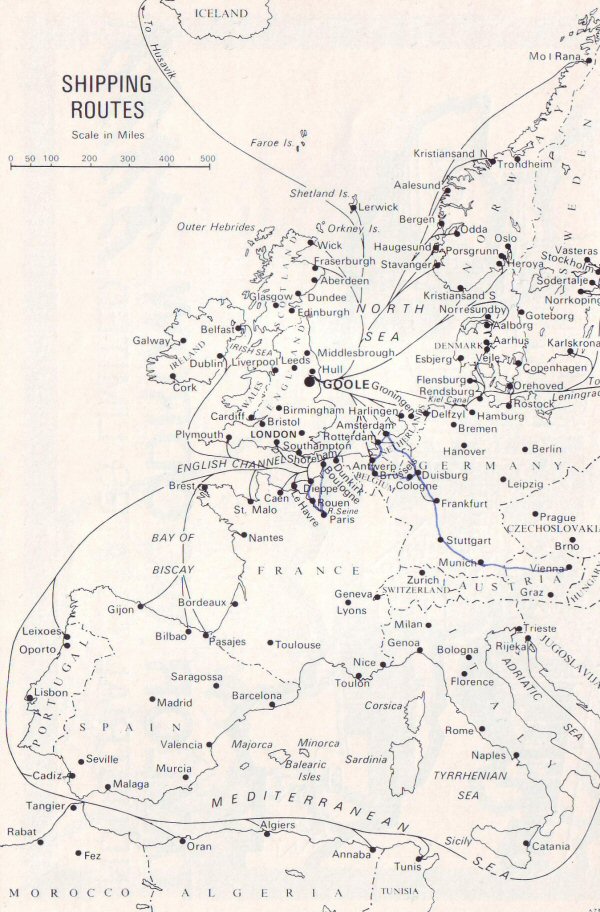
The following table lists some examples of the countries which trade through Goole and the merchandise conveyed.
| Country | Import Commodities | Export Commodities | Sailing Time |
| West Germany | Steel, Magnesite Bricks, Paper, Machinery, Glassware and Earthenware, Textiles | Chemicals, Wool, Steel, Machinery, Tractors and similar, Coal | 40 hours |
| Netherlands | Strawboards, Starch, Machinery, Food-stuffs | Machinery, Textiles, Tractors and similar | 36 hours |
| Norway | Timber, Paper, Pulp | Machinery, Textiles, Coal, Coke, Coalite | 52 hours |
| Sweden | Timber, Paper, Pulp | Machinery, Textiles, Coal | 72 hours |
| East Germany | Sugar, Glassware, Earthenware, Fibre | Textiles, Machinery, Steel | 48 hours |
| France | Machinery, Textiles, Wool | Whisky, Machinery, Textiles | 30 hours |
| Belgium | Wool, Chemicals, Textiles | Machinery, Textiles | 30 hours |
| Spain | Wool, Fruit and Vegetables, Raw Materials | Machinery, Textiles, Steel | 96 hours |
The canal and Dutch River provide other forms of water transport.
The canal, which is part of the Aire and Calder Navigation system, has links to the Leeds/Bradford areas and into the Midlands. It serves to move bulk goods easily and relatively cheaply. The canal comes into the area from the west adjacent and parallel to the Dutch River which is not used for cargo movements apart from providing access to a local fertilizer works. It is narrow and winding beyond the section prepared as an open drain for the surrounding agricultural land.
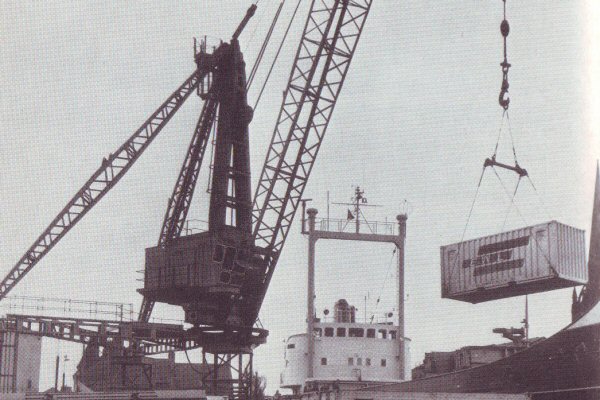
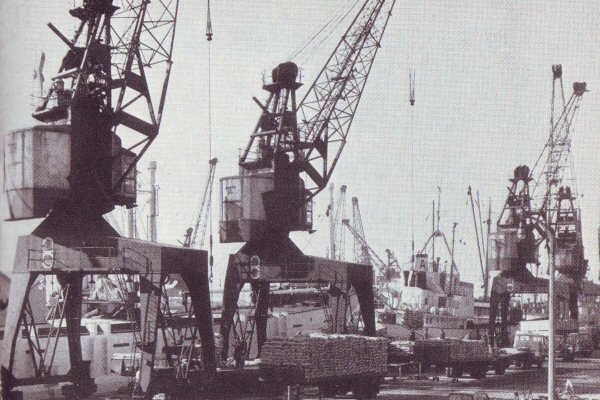
Transport by Road
Goole is situated on the A614(T), east of where the first road bridge, from the sea spans the River Ouse. 'Boothferry Bridge' is an iron swing bridge constructed in the early part of the century and now carrying the major trunk road from the Humberside region into the large industrial areas of the Midlands. Over the river in East Yorkshire the A614(T) crosses the A62(T) which is the link between Humberside and the Leeds/ Bradford areas.
From Goole, travelling west along the A614 and turning onto the A1041 access to the A1(T) is only 20 miles away. From this point all major cities (such as Sheffield, Birmingham, Leeds and Manchester) can be reached using motorways.
To the south, road links to the iron and steel producing areas in North Lincolnshire are not very good. The A161 is a narrow twisty road and this forces larger transport to use the longer route via the A614 and A18.
There are no restrictions on the normal loads brought by lorries into Goole, but Boothferry Bridge imposes a height and width restriction on loads travelling from the north.
Below is a list giving a few examples of distance and average lorry travelling time to cities in the nearby industrial areas.
| City | Miles from Goole (approx) | Travelling Time (hours) |
| Leeds | 35 | 1.5 |
| Hull | 27 | 1.0 |
| Manchester | 73 | 3.0 |
| Sheffield | 41 | 1.75 |
| London | 148 | 6.00 |
| Newcastle | 97 | 4.00 |
| Birmingham | 104 | 4.25 |
Transport by Rail
Being on the main line from Hull to Doncaster and with a branch line running to Leeds and Wakefield, Goole is well positioned for receiving rail traffic from all parts of the country. This applies particularly to the industrial areas which use railway facilities to transport bulk loads such as steel, chemicals and coal to and from the port.
The rail facilities which cover the dock area provide for the easy and convenient loading and off-loading of all the usual freights and unusual loads can be accommodated on notice.
Passenger Transport
Up to now only the transportation of goods has been discussed. On the passenger transport scene the river and the canal are discounted, but it is possible to get a berth to the continent.
On the roads regular bus and coach services from the town to the surrounding areas are comprehensive with services to Leeds, Selby, Hull, Sheffield, Doncaster and London amongst other places.
On the railways regular passenger trains operate direct to Hull, Doncaster, Rotherham, Sheffield, London, Wakefield and Leeds. 'Pay train' services operate on trains running between the town and Leeds for shopping and working commuters.
Transport in the Future
Having looked at the existing methods of transport communications serving Goole, what of the future?
Within the foreseeable future the river is unlikely to change unless system alterations to the deep water channel are made.
It seems the vast potential of the canals with regard to carrying bulk cargoes across country is largely ignored in England whilst several of the other common market countries are at present expanding their canal systems both for trade and leisure use. Fortunately the Goole to Leeds canal is used successfully being one of the few canals in the country to "pay its way".
The railways, apart from the loss of some village stations, have not changed for many years and change in the future is unlikely and thus the roads and the air hold the keys to transport communication improvement in the future of Goole.
With improvements to existing roads, transport will become easier and quicker, but the major impact will be the planned motorways and proposed southern by-pass. The first motorway to affect Goole will be the M62 which is to pass within a mile of the town, to the west. This road will relieve the A614 and form a direct motorway link with Sheffield and its associated industrial areas and is expected to be completed by 1975. In phase with the motorway, proposals are being offered for a road from the motorway to the south of the town, through the industrial estate and direct on to the docks. Known as the southern by-pass it will keep big lorries out of the centre of the town.
Air is not used for direct transport to Goole but a future regional airport would affect the town to some degree especially if it was to be sited at Balne or Thorne Waste. The town would then become more unique, an inland seaport, an airport and a Go-port.
Go Goole by Motorway
The stranger on visiting Goole and district will notice terraces, an Educational Institute and even a public house bearing the name Vermuyden and, no doubt, subconsciously questions the reason. It is with this Dutchman, Vermuyden, who came to this country in 1621 that the history of Goole really begins. In 1626 Vermuyden was granted a Charter by Charles I to construct a canal joining the Rivers Ouse and Don, which canal is known in the present day as Dutch River. The actual port was built and developed from the Northern bank of the Dutch river and was opened exactly 200 years after the granting of Vermuyden's Charter in 1826 by the then Undertakers of the Aire and Calder Navigation, thus linking up this country's canal system with a compact port 50 miles from the sea and in close proximity to the Yorkshire coal fields and the centre of the wool trade at Bradford. Today this proud, compact yet major port ranking about the tenth in the some two hundred ports of the United Kingdom boasts 37½ acres of water enclosed docks, modern electric shore cranes, three heavy lift cranes with a maximum lift of about 60 tons and turns round over 2 million tons of cargo per annum. From the very beginning of its history until the present day the port has thrived on a staple diet of coal exports and in these modern times whilst declining nevertheless a considerable amount of the Coal traffic is still carried into the port by rail and on the British Waterways canal system by a unique method, the 'Tom Pudding' craft trains. These trains bring the coal from the Yorkshire coal fields in 40 ton compartment boats directly alongside the ship to be then hoisted and tipped into the ship's hold by a special hoist.
With the advent of natural gas and the ever increasing usage of oil fuel, Goole's coal trade has inevitably declined and although increases are expected from the Common Market the pattern of Goole's trade is changing.
The concentration now is on an ever expanding general cargo trade in conventional cargo liners. Regular weekly cargo liners ply in and out of Goole to and from ports in Belgium, Denmark, France, Germany - both East and West, Holland, Norway, Portugal, Spain and Sweden. The Tramp Charter trade, also ever expanding, concentrates on fertilizers, grain and wheat, sugar and sundry bulk commodities to and from ports all over Europe and the Mediterranean and even to and from trans-Atlantic ports on the Eastern seaboard of the United States and Canada. In recent years the timber trade from the Baltic and White Sea ports has shown remarkable progress.
Throughout its history and despite many adversities, in particular the two major wars, the port's development has been due basically to its proud and unrivalled record of labour relations, facilitating a speedy and efficient turn round of ships with the consequential economies to Shipowners, Exporters and Importers, quite apart from the competitive rates for Stevedoring and other ancillary services obtained in the port. Indeed in the first 146 years of its history to the mid-summer of 1972 the port had the proudest history for labour relations of any in the country.
After a remarkable history and a hard working present, Goole looks forward to the greatest era of all times with the coming in the early Seventies of the M18 and M62 motorway links to within a mile of its efficient docks complex. Goole has always been in a position to exploit the current transportation trends and after its opening and development on canal traffic the main line railways came in the mid 19th century. The railways, of course, only came about due to the inadequate road systems in this country and despite the railways superiority in the fast conveyance of bulk traffic, the system lacks the flexibility of road transport for the carriage of smaller quantities.
Today about 25 percent only of the traffic in and out of Goole is carried by canal and rail and, no doubt, the 75 per cent now carried by road will be greatly increased with the coming of the motorway, especially the M62 connecting the industrial centres of Lancashire and Yorkshire with Goole and the Common Market Countries via the North Sea. This new motorway will link across the country the concentrated industrial potential of urban areas with a population of over three millions and with the M18 - M1 connection four millions, with Goole, the nearest outlet to the North Sea for the Common Market.
The present industrial estate, at Goole, now being extended by at least another 48 acres, within a half mile of the motorway intersection, will attract even more industry and commerce to the town and port, now poised on the brink of the greatest era in its history, as the only port on the East Coast, with a motorway connection so close to the docks. Go Goole - ship via Goole - the motorway port of the seventies.
An Historical Note
In such a forward-looking publication there should, strictly, be no place for history. It is the future - Goole's future - with which we are concerned.
And yet, if history teaches us that man never learns from history, a potted biography, as it were, of the town and port of Goole might not come seriously amiss. For there is, indeed, much to be digested from Goole's past years.
Not that, comparatively, there are many of them. Until the 1820s Goole was no more than a hamlet beside the River Ouse, with a population of 450. And for a living its people dug peat and grew flax and potatoes. There was a Staith on the river bank, Murham Staith - and ships averaged about five calls a year, to load potatoes. Goole, in fact, lived its own life, behind its half-tamed rivers and its partly-reclaimed moors.
And then came the Aire and Calder Navigation, with its decision to make Goole the outlet to the Ouse tideway of a new canal. The navvies descended on Goole, the canal from Knottingly was opened in July 1826, and the port of Goole was born - a canal port, be it noted, born at a time when the heyday of the canal was already fading before the impact of the railway age.
But Goole, in spite of its chequered beginnings, flourished. The town began to grow side by side with the port. The town was on the map, literally and figuratively, even on the six inch Ordnance Sheets. Shipping began to be attracted to the port, chiefly at Hull's expense, and in 1828 Goole was declared a foreign trade port.
It began to attract people to it. In the ten years from 1822 to 1831 the population grew from 450 to 1,671 - a 273 percent increase. By 1851 the population was seven times the 1822 figure. Goole was on its way.
And it continued to grow steadily under the benevolent though restrictive paternalism of the Aire and Calder Navigation - restrictive because they preserved, just as long as they legally could, their monopoly of land. The railway gained access to Goole, for example, only after a bitter and protracted struggle. The Undertakers of the Aire and Calder Navigation, as they styled themselves, were benevolent dictators of the port they owned. And they almost succeeded in burying it in spite of their benevolence.
The river craft of the early nineteenth century - the keel, the billy boy and the sloop - gradually gave way to steam and Goole, from being a frontier town amidst the great sweep of Yorkshire fenland in the 1820s became a monument to the high noon of the canal age. It was founded on coal, it was created as a coal terminal, it flourished because of coal - and it almost died because of coal; for until the First World War coal was almost the only egg in Goole's basket.
But Goole absorbed its first lesson - the need to diversify. Shipping companies established continental links, Goole became the eastern base of the once-famed Lancashire and Yorkshire Railway fleet - and its reputation for efficiency and reliability grew apace. Goole believed in itself. Its people were proud of the port and of themselves.
Then came the First World War, and Goole's trade as a port virtually ceased. Its ships were commandeered for war service. Many were lost; only some were replaced. The depression of the twenties was followed by the stagnation of the thirties, and in 1939, just as Goole was beginning to claw its way back to some measure of stability, came the Second World War. The navigation lights on the Humber and Ouse were extinguished, the port was closed and not until the mid-forties could Goole begin the hard task of hauling itself back to prosperity.
But it is again beginning to win the struggle. As the coal trade began to dwindle, so were other trades fostered, and today Goole still enjoys the reputation it created for itself more than a hundred years ago as a port renowned for its reliability and efficiency. Today Goole is poised to become the motorway port of the east coast. It has a population of 18,000, soon to become when the town becomes the head of a new district council.
The town itself, naturally, grew side by side with the port. Its successive councils - first urban, then borough - inherited the pattern dictated by the Aire and Calder Navigation as the first owners. Not until the last ten years or so has there been much urgency in the town's affairs. The need for industry, so apparent at the end of the Second World War, was not matched by a determination to get it. But the Council at last established an industrial estate, a few factories were attracted to establish themselves on it because of the freely available female labour force, but far too many Goole men even now have to travel out of town each day to earn their living because there is no work for them on their doorstep. There indeed, lies Goole's crying need - to attract industry that will give hundreds of men steady work within the town.
It may be that such work will come, providing factories will establish themselves within the port when the motorway is built - and Goole, with its remarkable communication systems of road, rail, river and canal, is indeed poised for a remarkable forward leap. It has everything in its favour; all it needs is the leadership of a keen, enthusiastic administration with the vision to see that Goole's insular past is behind it and that Goole can really become the hub of Humberside instead of merely boasting about it.